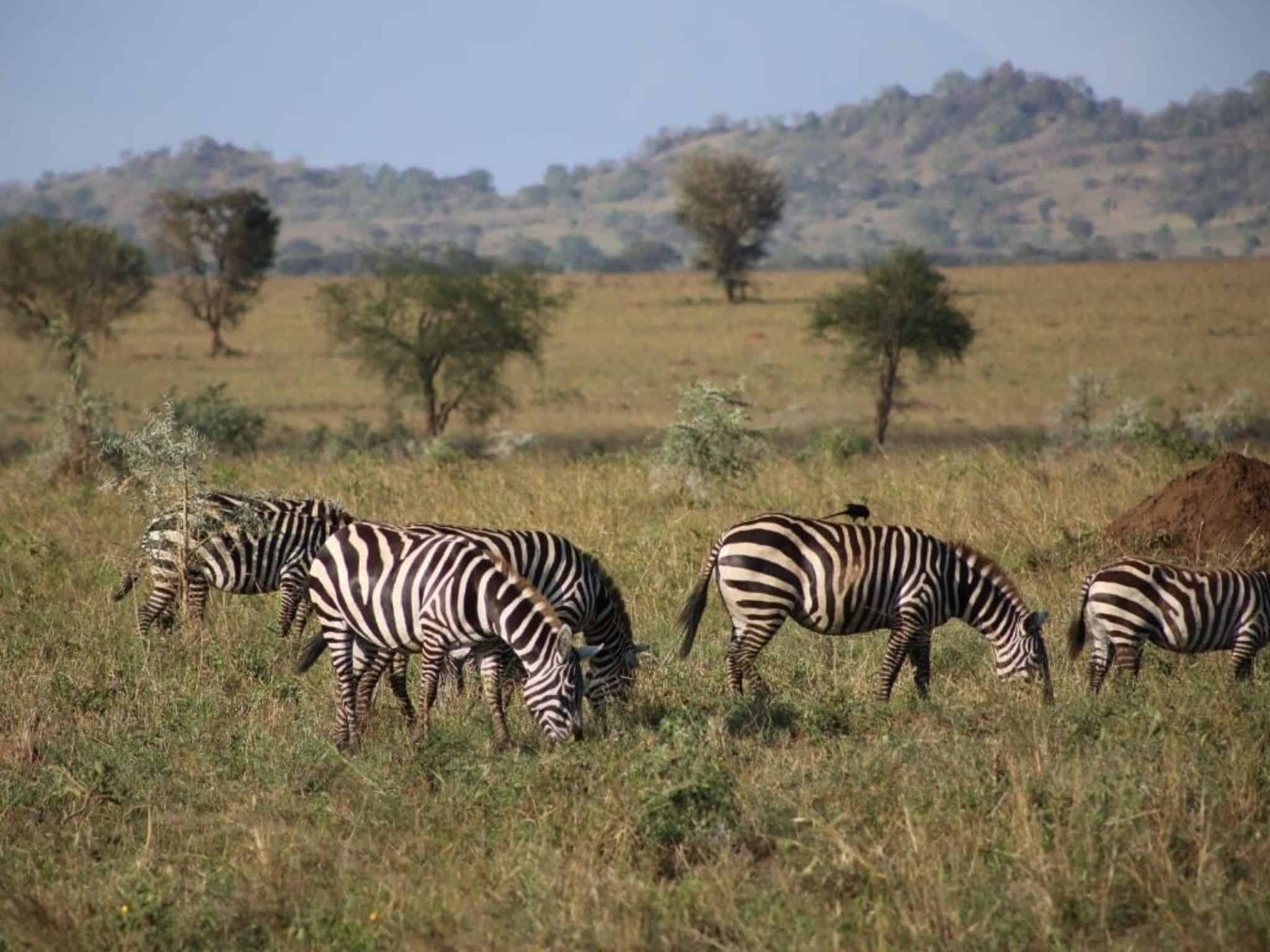Tourist Attractions In Kidepo Valley National Park: The Ultimate Travel Guide
If you’re planning a trip to Kidepo Valley National Park, you’re in for a treat. You’ll instantly fall in love with this isolated park full of unique mammals and birds. Not sure what tourist attractions are available in the area?
Use our guide to plan your Kidepo Valley itinerary so that you can experience all of the best things this park has to offer.
What Is Kidepo National Park Famous For?
Kidepo Valley National Park is situated in the rugged, semi-arid valleys between Uganda’s borders with South Sudan and Kenya. Surrounded by mountain ranges, this isolated savannah landscape is home to a large number of big game and birds.
Kidepo has been ranked as the second Best Safari Destinations in Africa.
The landscapes alone may be enough to captivate your attention. Kidepo Valley National Park also has the largest variety of mammals of all the national parks in Uganda, as well as hundreds of species of birds.
7 Best Tourist Attractions In Kidepo Valley National Park
A hidden gem in Uganda, Kideop Valley National Park is home to some animals only found in this region and unique cultural experiences. Here are our favorite tourist attractions in Kidepo Valley National Park:
1. Narus Valley Game Drive
Narus Valley contains the only permanent water points in Kidepo Valley National Park. This makes it the perfect location for scouting big game congregating for most of the year.
In Narus Valley, you’ll find buffalo, elephants, warthogs, giraffes, lions, and zebras. If you’re lucky, you may even spot a cheetah.

2. Kidepo Valley Game Drive
Kidepo Valley does not have as much big game as Narus Valley, but it makes up for it with the scenery.
While making the drive to Kidepo Valley, the road intersects with the Kidepo River. During the dry season, white sand and a Borassus palm forest are the only remnants of the once flowing Kidepo River.
In Kidepo Valley you can keep an eye out for ostriches and secretary birds.

3. Kidepo River
While visiting the national park during the dry season, the Kidepo River does not look like a river. Rather, it is a 50-meter wide bed of white sand that stretches as far as the eye can see on either side.
The river beds are lined with Borassus palms and the remaining vegetation from the wet season. During the two brief rainy seasons, Kidepo River fills and becomes a refuge for the many animals in the park.
If you plan to visit Kidepo during the dry season, you can arrange with your tour company and the UWA rangers to camp in the river bed.
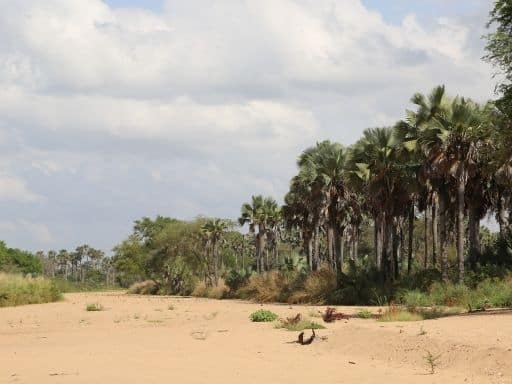
4. Kanangorok Hot Springs
If you are exploring the Kidepo Valley, make sure to continue driving to Kanangorok Hot Springs.
The hot springs are located on the South Sudan border of Uganda and provide magnificent views of the mountain ranges.

5. Lorokul Cultural Group
If you want to learn about the Karamojong tribe, a visit to the Lorokul Cultural Group located just outside of Kidepo Valley National Park is a must.
Notorious cattle-herders, the remote Karamojong tribe has created a welcoming space to share their culture and traditions with visitors to the region. This is one of the most unique tourist attractions in Kidepo Valley National Park.
6. Mount Morungole
At 2,750m, Mount Morungole is the highest point and the source to both the Narus and Kidepo Rivers in Kidepo Valley National Park.
It is also home to the smallest ethnic group in Uganda, the IK tribe. Planning a hike on Mount Morungole offers a chance to see forest vegetation and capture incredible photos of Kidepo Valley National Park.
7. Birding
Kidepo is home to approximately 475 different species of birds. Some of the birds you will find in the national park are Abyssinian Roller, Purple Heron, Abyssinian Ground Hornbill, Red-billed Oxpeckers, African Hoopoe, Red-Cheeked Cordon Bleu, Ruppel’s Super Starlings, and Karamoja Apalis among many others. You can also find Clapperton’s Francolin here, which is the only place you will find this bird in Uganda.
The best places for bird watching are in Narus Valley and Namamukweny Valley in the northeast. Interestingly, in the local language, Namamukweny means “a place with no birds” yet it has some of the best birding opportunities in the park.
If you’re looking to find Ostriches and the Secretary Bird, make your way to the northern Kidepo Valley.
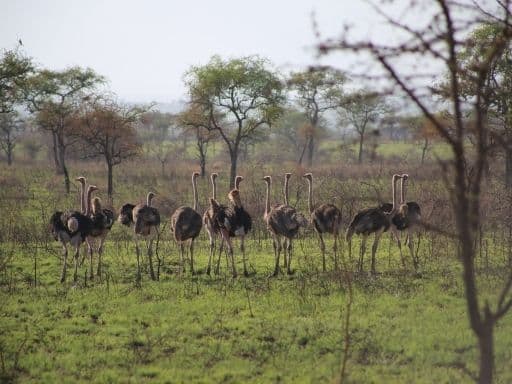
Where is Kidepo Valley National Park?
Kidepo Valley National Park is in the most northeastern part of Uganda. The park lies near the border of South Sudan and Kenya.
How To Get To Kidepo Valley National Park
There are a couple of ways to get to Kidepo Valley National Park. Here are the options you can consider for your trip:
By Car
Most people who visit the park drive. Driving from Kampala to Kidepo Valley National Park is about 10 hours.
Some people may prefer to spend one full day driving, while others prefer to break the trip into two days with a stopover in Gulu (5 hours from Kampala).
If you do plan on driving to Kidepo Valley National Park, we recommend hiring a driver or tour company who can take care of these details and allow you to enjoy sightseeing during your trip. We used Northern Nature Safaris for our trip.
By Plane
If you fly to Kidepo Valley by plane, you’ll want to book a plane ticket through Aerolink.
The plane ride from Entebbe to Kidepo Valley National Park is approximately one hour and thirty. The airstrip is less than a 10 minutes drive to the accommodations at the park, so it is very convenient to fly to.
It is necessary to coordinate your flight arrival with your hotel so that someone can pick you up and have a vehicle reserved for your game drives during your stay.
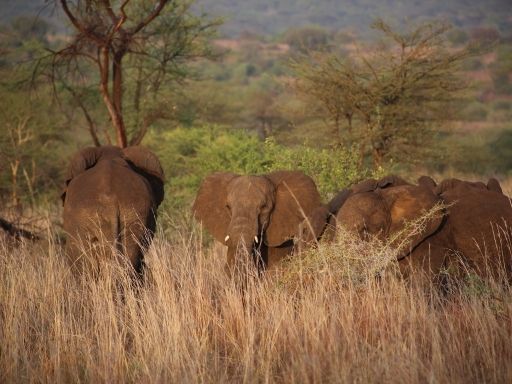
Best Accommodation In Kidepo Valley National Park
Kidepo Valley National Park is isolated and generally untouched by development, which is wonderful for game drives and seeing animals in their natural habitat, but accommodation options are not extensive.
Whether you’re looking to spend as little as possible on accommodation or you’re willing to splurge, this is what you need to know:
Budget Stay: Apoka Rest Camp
If you’re traveling on a budget, consider staying at Apoka Rest Camp, which is run by Uganda Wildlife Authority (UWA). You’ll spend about $20 per night for a self-contained banda.
This is also where all of the park rangers live, so hiring a ranger for game drives is incredibly easy, and there is an added level of security on site.
Local food is available on order, but you will have to book in advance since all provisions are carried into Kidepo Valley.
If wilderness camping is your thing, consider staying at UWA’s Self-Catering Campsite. As the name states, this is self-catering, meaning you will have to bring all of your own food and beverages for your stay. You’ll also need to hire a ranger to stay with you during your trip.

Mid-Range Stay: Kidepo Savannah Lodge
If you’re looking for accommodation with more meal options and areas for gathering with people, consider Kidepo Savannah Lodge.
Their platform safari tents are self-contained and cost $165 per night for their full board option.
This lodge is located 500 meters outside of the Kidepo Valley National Park gates, so you won’t have to pay park fees to stay here, but you can still enjoy overlooking Narus Valley on their wooden deck.
Luxury Stay: Apoka Safari Lodge
Planning to spend a bit more during your trip to Kidepo Valley? Then you might like Apoka Safari Lodge.
Room costs depend on the season. During the low season, you’ll spend $518 on a room, while during the peak season it’s $881. One of the biggest perks to this lodge is the pool at the hotel that overlooks the Narus Valley, which will help you cool off between your morning and evening game drives.
Is Kidepo National Park Safe?
In the somehow recent past, the Karamoja region of Uganda has been in the spotlight for its insecurity due to land and tribal conflict. Today the area is completely safe. There is a military presence both at the borders and patrolling the park to ensure that peace remains in the region.
You will also travel with a UWA ranger during your game drive safaris and any other activities, further guaranteeing your safety in Kidepo.
The only safety measure you should take during your travel is taking your malaria prophylaxis. Nothing will ruin an incredible trip more than a case of malaria.
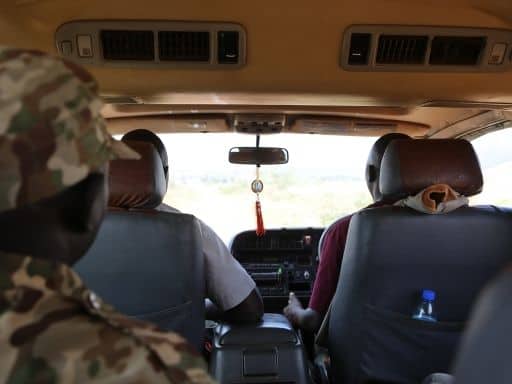
How Many Days To Spend In Kidepo National Park?
In our opinion, Kidepo Valley National Park is the best place to visit and see animals in Uganda.
Most people head to the other national parks because of their proximity to Kampala and the airport, but we recommend making Kidepo Valley National Park part of your trip.
If you’re into jaw-dropping views and seeing animals in their natural habitat, this will be your paradise destination.
But overall, we feel that you should spend at least two full days in the park. There is a lot of experience, but you’ll get a good feel for Kidepo Valley National Park.
How Is The Weather In Kidepo Valley National Park?
Kidepo Valley National Park has a semi-arid climate meaning that it is dry with fluctuating amounts of rain. Droughts often occur here.
Wet season runs from April to August. Temperatures during the day average around 27°C/81°F. While rainfall is not as much as in other parks in Uganda, afternoon showers are to be expected, so keep this in mind while you prepare for your trip.
The dry season runs from September to March, and peaks in January and February. During this peak dry season, there is almost no rain and it is dry and hot. Temperatures can be 32°C/90°F during the day and potentially reach 40°C/104°F.
Best Time Of The Year To Visit Kidepo National Park
To avoid the intense dry season heat and messy roads during the rainy season, we recommend visiting Kidepo Valley National Park from August to September.
If you don’t mind the heat, we highly recommend visiting Kidepo Valley National Park from December to February. During this period, you’ll have the best chance of seeing animals congregating around the minimal water sources.
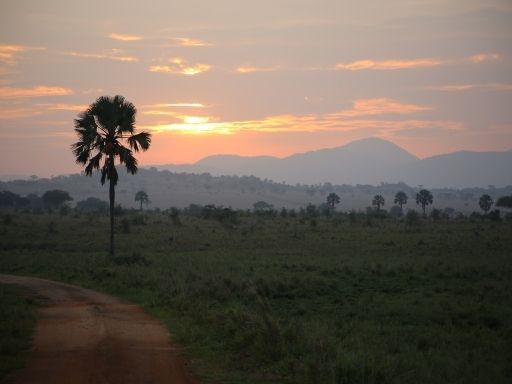
What Should I Bring To Kidepo Valley National Park?
Everything is brought into Kidepo Valley National Park, including bottled water for drinking. Not only does this become a high expense for visitors trying to stay hydrated throughout their stay, but all of the plastic bottle waste is not good for the environment.
Where To Visit Next?
After visiting Kidepo Valley National Park, we suggest traveling to other nearby cities Gulu and Mbale. Both of these places offer a modern respite from the isolation of Kidepo, as well as additional touring opportunities.
You can also head down to explore Kampala and Entebbe before connecting to your next Ugandan destination.
Wrap Up: Tourist Attractions In Kidepo Valley National Park
Kidepo National Park flies under the radar in comparison to the other more central national parks in Uganda. But its beauty rivals many of the other destinations in the country.
See for yourself how amazing this remote park is and add the ultimate travel guide for Kidepo Valley National Park to your itinerary. Following our suggestions, you won’t miss a thing.
